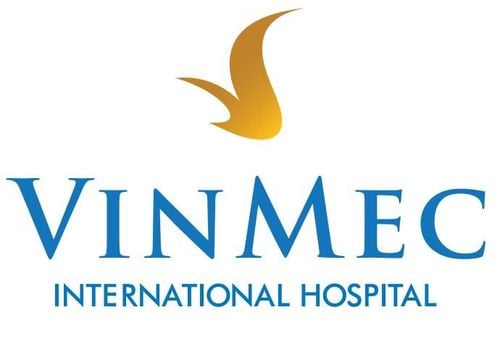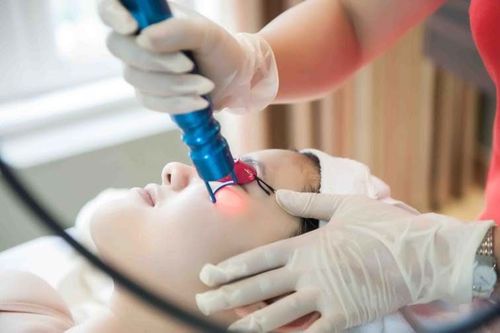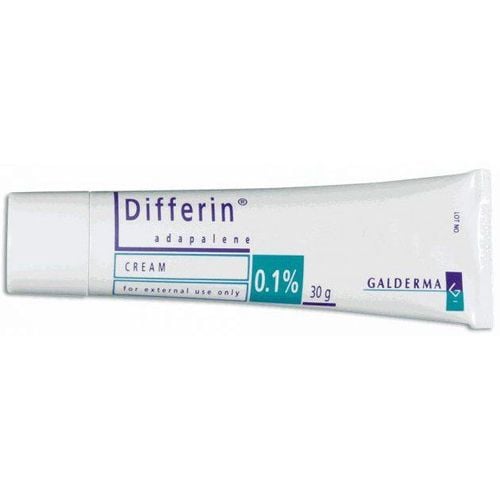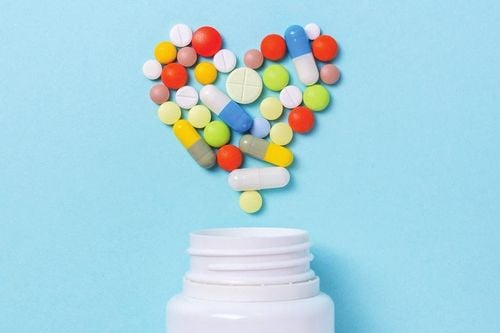This is an automatically translated article.
Baby's skin is very thin and sensitive, so it is easily irritated. Some common skin conditions, including tiny blisters in babies, are worrying many parents. But in reality, most babies developing blisters are normal and harmless.1. Tiny blisters in babies
Children's acne doesn't have the same blackheads as adults, but looks similar to teen acne. You will see bumps or dots, white or red, surrounded by red skin. Tiny baby blisters usually appear on the cheeks, eyelids, and nose, and sometimes on the forehead, chin, scalp, neck, back, or chest.About 20% of babies (mostly boys) have acne, which can appear at birth and become more prominent after a few weeks. Newborn blisters usually clear up after a few weeks, but can persist for months. The condition is not harmful to the baby and rarely leaves a scar.
A small number of infants develop blisters later, about 6 weeks after birth, and can last until after 2 years of age. This is a sign that the child will have a lot of acne during the teen years, if severe acne can leave scars.
2. Causes of baby acne
There is no clear answer. Experts think baby acne could be an inflammatory response to common yeast on the skin or to hormones a baby receives from its mother late in pregnancy. But scientists continue to study other factors and have yet to reach a final conclusion.If you take certain medicines while breastfeeding or if your baby has to take certain medicines, it can also cause blisters in children. In some cases, baby blisters can be a reaction to a skin care product, especially one with oil that clogs the pores.
Children's blisters can be aggravated by:
The child is hot. The baby is fussy. Saliva or vomit gets on the skin Hard cloth Strong detergent.
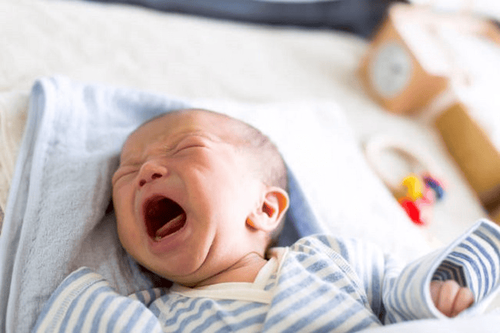
Bé quấy khóc hay bị nóng đều có thể làm tình trạng mụn tồi tệ hơn
3. Treatment of children's acne
Some things you can do to control baby blisters are:Wash your baby's face with mild soap and warm (or just warm) water once a day. Then pat dry. Acne and blisters in children are harmless and should not cause any discomfort to your baby, so try to be patient and don't be overly concerned. Gently wipe away any saliva and vomit from your baby's face to avoid irritating the skin. Some mothers have had success treating microscopic blisters in their infants with breast milk. While there's no proven research, because breast milk has antibacterial and anti-inflammatory properties, you might as well give it a try. Use unscented baby lotions, as scents can aggravate your baby's acne. Wash baby's clothes with a mild, unscented laundry detergent. Baby's delicate skin is easily irritated by chemicals. Dress your baby in soft fabrics that won't irritate your baby's delicate skin. Some things NOT to do with acne, blisters in children:
Do not abuse scrubs, because the cause of children's acne is not due to dirt. In fact, washing too much can further irritate your baby's skin. Do not use over-the-counter acne medications. Usually baby acne doesn't require medication, but if it does, your doctor will recommend an antifungal cream that's safe for your child. Don't put moisturizer on your baby's skin, or the acne will get worse. Some parents say an oil-free cream will help their baby get rid of acne. If you want to try it, monitor the effects on your baby's skin and stop using it if it gets worse. Do not squeeze or squeeze the pimple to avoid causing infection or irritation.
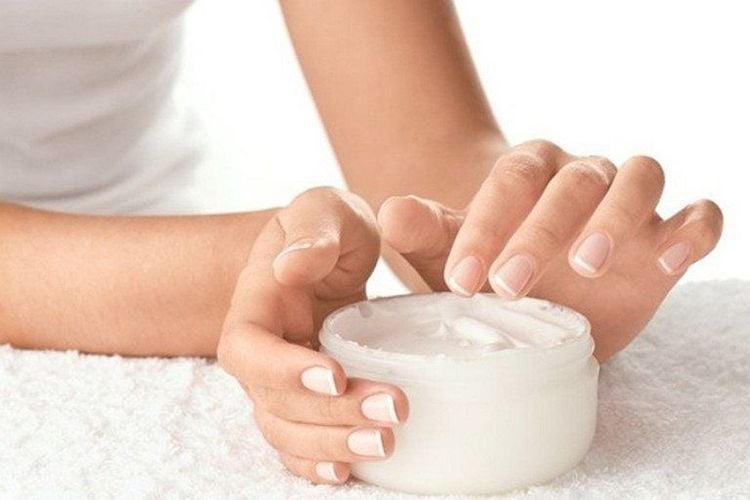
Hãy nhớ tuyệt đối không bôi kem dưỡng ẩm lên da bé nếu không tình trạng mụn sẽ tệ hơn
4. Other baby skin problems
Baby's tiny papules are not always acne, but are more likely to be caused by other skin problems, such as:Heat rash : When the weather is hot or humid, sweat can cause It can clog your baby's pores and cause tiny red bumps on chest, shoulders and underarms, elbows, neck and groin. Heat rash usually goes away without treatment. To avoid this, try to keep your baby from overheating, dress him in loose cotton clothes in the summer, and avoid wearing too many layers in cold weather. Milia: These tiny white bumps are dead skin cells and get trapped under the skin's surface. They appear in about 40 - 50% of babies and go away on their own within a few weeks. Milia are harmless, unrelated to acne, and require no treatment. Eczema: These red patches appear on the face, but can also spread to other parts of the body. If infected, the eczema may scab and turn yellow, or blister and water. Eczema is more common in infants with a family history of allergies or eczema. The baby's skin should be kept moist and loose cotton clothing should be worn. If the eczema doesn't go away and is causing your baby's discomfort, your doctor will prescribe medication to treat it. Erythema toxum: Known as neonatal toxic erythema, it usually appears on the 2nd day after birth, or also occurs at birth or during the first few weeks. Hard, red (sometimes white or yellow) nodules appear on the face, chest, or limbs. The disease is very common, affecting about 50% of babies, often appearing on its own and gradually disappearing without treatment in about 1 week. Seborrheic dermatitis: Pale yellow scaly patches on a child's scalp are called seborrheic dermatitis. This condition usually appears between 3 weeks and 12 months after giving birth. Although it will go away on its own without treatment, you can help soften the flakes by gently massaging with a little natural oil, then gently brushing and rinsing with baby shampoo. Seborrheic dermatitis can also appear on the baby's navel (armpits, neck, behind the ears, forehead, eyebrows, or diaper area).

Những nốt sần li ti trên da bé cũng có thể là biểu hiện của một số loại bệnh khác như phát ban, viêm da tiết bã,...
5. When to see a doctor?
If your baby's blisters don't go away within a few months, or if you're concerned, talk to your doctor during your baby's well-child visit. Your doctor will check to rule out a potential cause of your acne (which is rare) and recommend a mild topical medication to help clear up acne if it's severe or persistent.If your child's acne is pus-filled or inflamed, or develops blackheads, see a doctor right away. This could be a sign of an infection. If your baby develops blisters or a rash after taking the medicine or is sick (due to a viral infection), let the doctor know for timely treatment.
Also, if your baby develops acne after 6 weeks of age, see your doctor to rule out a skin infection, eczema, or some other skin problem.
Vinmec International General Hospital is the address for receiving and examining respiratory diseases that infants and young children are susceptible to: viral fever, bacterial fever, respiratory infection, pneumonia in children, .... With modern equipment, sterile space, minimizing the impact as well as the risk of disease spread. Along with that is the dedication from the doctors with professional experience with pediatric patients, making the examination no longer a concern of the parents.
Customers can directly go to Vinmec Health system nationwide to visit or contact the hotline for support.
Please dial HOTLINE for more information or register for an appointment HERE. Download MyVinmec app to make appointments faster and to manage your bookings easily.
Reference source: babycenter.com



